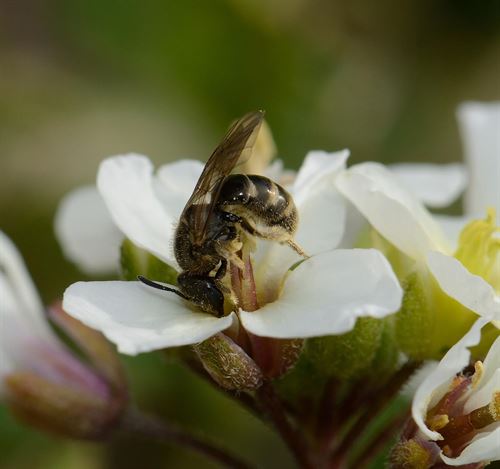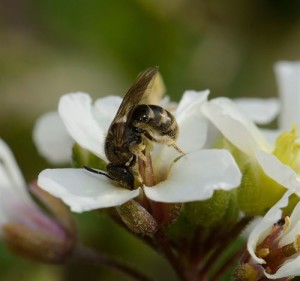
He 10% bee species faces extinction in Europe
MADRID, 19 Mar. 2015 (EUROPA PRESS) – Photo: DAVID GENOUD / IUCN Photo: DAVID GENOUD / IUCN
Nearly a tenth of Europe's bee species are facing extinction and the status of more than half is unknown., according to a report from the International Union for Conservation of Nature (UICN, for its acronym in English). This is the first evaluation carried out on bees at a European level, which reveals that 9,2 percent are threatened with extinction, while 5,2 percent could be threatened in the near future. Total, the 56,7 percent of the classified species have poor data, for the lack of experts, data and financing, making it impossible to assess their risk of extinction. The document has been published this Thursday as part of the IUCN European Red List and the project on the state and trend of European pollinators (STEP Project) sponsored by the European Commission. Specific, for the first time provides information on 1.965 species wild of bees in Europe and includes their status, distribution, population, trends and threats. The director of the IUCN Global Species Program, Jean-Christophe Vié, has argued that this is the best evaluation available, However, current knowledge about bees is “incomplete” and there is a lack “alarming” of experts and resources. “Bees play an essential role in the pollination of our crops. We must urgently invest in more research to obtain the best recommendations to reverse its decline”, has underlined. The report reveals that 7,7 percent of the species has decreased their populations; the 12,6 percent are stable and the 0,7 percent has increased. While, the population trend of the 79 percent of the bee species. In this context, the document points out that one of the main threats to their survival is changes in agricultural practices, increased intensification of livestock farms that have led to large-scale losses and degradation of bee habitats. For example, refers to intensive pasture production causing loss of rich pasture areas and seasonal flowers, they are an important source of food resources for pollinators. further, widespread use of insecticides also damages bees, and herbicides reduce flower availability, on which they depend. The use of fertilizers promotes homogeneous grasslands, with fewer flowering plants and legumes, which are food sources for many of these species. THREATS Intensive agriculture, livestock practices have caused a sharp decline in dry steppes, They are the habitat of the vulnerable Andrena, a common species in the eastern Mediterranean that extends from Sicily to Ukraine and to Central Asia.. Plowed lands, Mowing and grazing as well as the use of insecticides have caused a loss of 30 percent of the population in the last decade and approaching extinction in some countries. At the same time, the report points out that climate change is another important director towards the extinction risk of most bees and in particular bumblebees. Heavy rains, the droughts, heat waves and increased temperatures can alter habits, so some individual species have adapted to the situation and a reduction is expected “dramatic” of the area of their habitat, leading them to a population decline. Total, the 25,8 percent of species bumblebees are threatened with extinction, according to the report. The study also includes an assessment of the western bee (Apis mellifera) –that of the Iberian Peninsula–, which is the best known pollinator. Its native distribution occurs in much of Europe but it is uncertain what would happen as a truly wild species, more than as a domesticated species. Precisely, as the Red List only focuses on wild species, the evaluation has poor data. Thus, IUCN believes that deeper research is necessary to differentiate between wild and non-wild colonies and to better understand the impacts of malnutrition, pesticides and pathogens in the colonies of honey bees. “The quality of life and our future depends on many services that nature provides free of charge”, highlighted the European Commissioner for Maritime Affairs and Fisheries, Karmenu Vella, who added that pollination is one of these services, so you said it's “very worrying” learn how some of the top pollinators are at risk. “If we do not specify the reasons behind the decline of wild bees and act urgently to stop it, we could pay a very heavy price indeed.”, has warned. According to the report, bees are essential for wild ecosystems and agriculture as they pollinate, which has an estimated total cost of 153.000 million euros globally and 22.000 million euros in Europe every year, since they pollinate approximately the 35 percent of global agricultural production.
Source: http://www.europapress.es/epsocial/naturaleza-00323/news-close-each-10-species-bees-faces-extinction-europe-uicn-20150319123537.html |

Sorry, the comment form is closed at this time.